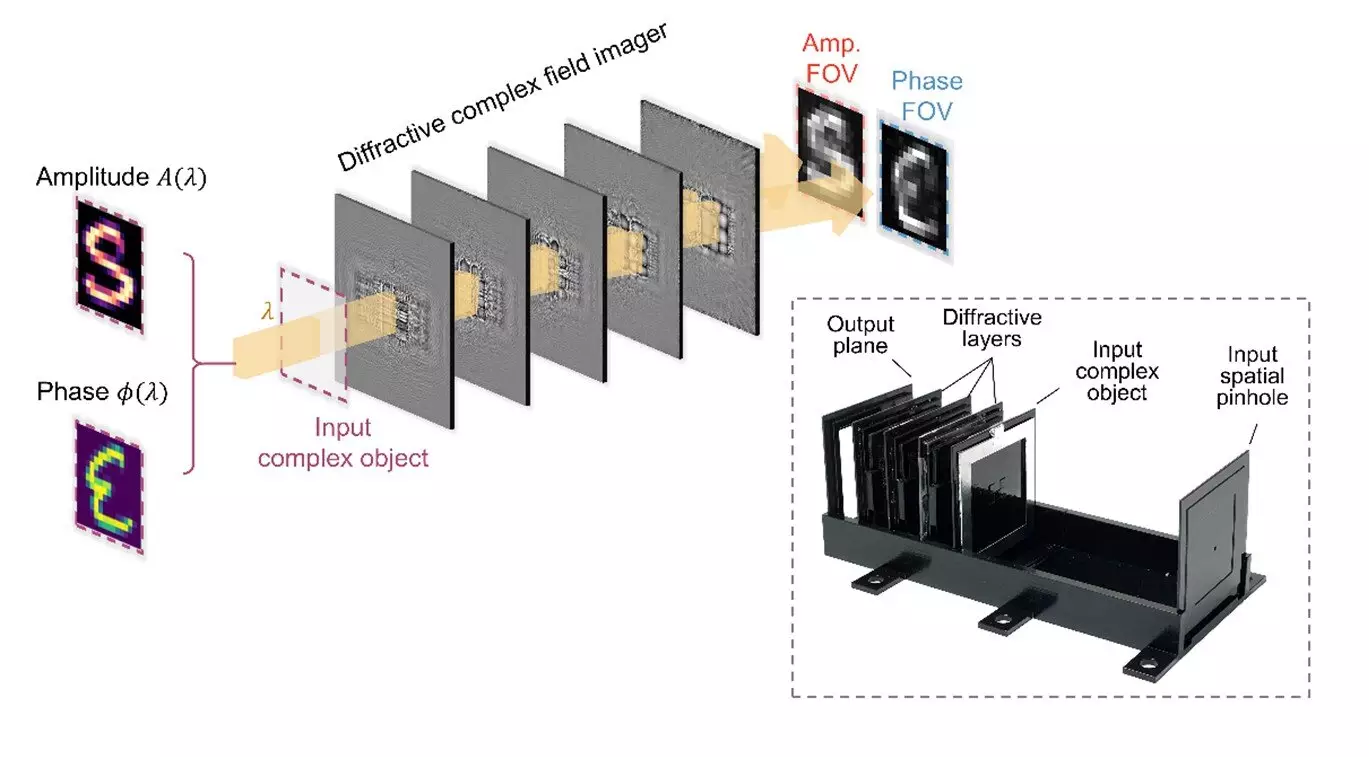The University of California, Los Angeles (UCLA) has made a groundbreaking achievement in the field of optical imaging technology. A new all-optical complex field imager has been developed, which has the capability to capture both amplitude and phase information of optical fields without the need for digital processing. This innovation has the potential to revolutionize various fields such as biomedical imaging, security, sensing, and material science.
Overcoming Limitations
Traditional optical imaging technologies typically rely on intensity-based sensors that can only capture the amplitude of light, neglecting the critical phase information. However, the complex field imager developed by the team at UCLA, led by Professor Aydogan Ozcan, overcomes these limitations. This innovative device utilizes deep learning-optimized diffractive surfaces to modulate incoming complex fields, creating two independent imaging channels that transform the amplitude and phase of the input fields into intensity distributions on the sensor plane. By doing so, the need for complex interferometric or holographic systems, as well as iterative phase retrieval algorithms, is eliminated.
The new complex field imager consists of spatially engineered diffractive surfaces arranged to perform amplitude-to-amplitude and phase-to-intensity transformations. This allows the device to directly measure the amplitude and phase profiles of input complex fields. Moreover, the imager’s compact optical design makes it highly integrable into existing optical systems, spanning approximately 100 wavelengths axially. This compact design opens up a wide range of potential applications in various fields.
The potential applications of the complex field imager are vast and promising. In the biomedical field, this technology can be used for real-time, non-invasive imaging of tissues and cells, providing crucial insights during medical procedures. With its efficient and compact design, it can be integrated into endoscopic devices and miniature microscopes, potentially advancing point-of-care diagnostics and intraoperative imaging. Additionally, in environmental monitoring, the imager can facilitate the development of portable lab-on-a-chip sensors for rapid detection of microorganisms and pollutants, streamlining the process of environmental assessment.
The complex field imager also holds promise for industrial applications, where it can be used for the rapid inspection of materials. Its ability to capture detailed structural information without the need for bulky equipment or extensive computational resources makes it a valuable asset in quality control and material analysis. With its compact design and ease of use, it offers new opportunities for scientific research and practical applications across various fields.
The development of the all-optical complex field imager by the team at UCLA represents a significant advancement in optical imaging technology. By enabling the direct capture of amplitude and phase information without digital processing, this technology simplifies the imaging process and expands the scope of potential applications. As further refinements and expansions are made to the design, the impact of this innovation is expected to grow, offering new avenues for scientific research and practical applications across numerous fields.


Leave a Reply